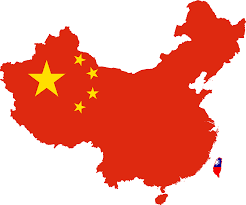The surface calm of China’s stock market today belied a more complex undercurrent, where slowing industrial momentum met surprising strength in consumer activity. Investors found themselves navigating a mixed landscape as May’s economic data threaded together soft factory output, firmer consumption, and carefully managed liquidity injections from the central bank.
Industrial production expanded by a narrower margin than expected, marking its weakest pace in six months. This slowdown points to persistent frictions within the economy, particularly from ongoing property sector fragility and softening global demand, most notably a sharp decline in exports to the United States. Despite efforts to stabilise the real economy, the underlying pulse from China’s traditional growth engines remains tentative. Lending data reflected this hesitancy, with only a modest rebound in new loans issued, suggesting banks remain cautious amid a complex credit environment.
Yet amid this industrial lull, the consumer narrative offered a rare lift. Retail sales jumped to their fastest year-on-year pace since the end of last year, lifted by seasonal effects, strong e-commerce activity, and a new wave of government-sponsored trade-in programmes designed to replace older household goods and vehicles. This pocket of strength hints at policy traction in stimulating demand, and more importantly, shows that targeted fiscal measures can still influence behaviour despite broader uncertainty.
Monetary authorities have continued to walk a careful line. The People’s Bank of China injected a sizeable volume of liquidity via medium-term operations, in what appears to be a continuation of its recent pattern of using the repo market to fine-tune conditions without committing to headline interest rate moves. The central bank’s posture suggests a readiness to support financial markets through measured tools rather than headline-grabbing stimulus, a strategy likely designed to maintain stability in the bond market while keeping inflation expectations anchored.
From a positioning perspective, this creates a nuanced landscape for investors. On the one hand, resilient consumer activity offers a layer of support for domestic-facing companies, particularly those in retail, logistics, and services. On the other, the lacklustre performance in industrials and the export sector serves as a reminder that global headwinds and internal imbalances are far from resolved. Equity markets appeared to reflect this middle ground, with benchmark indexes erasing early losses but remaining far from bullish territory.
Geopolitical threads continue to add complexity. Recent trade talks between US and Chinese officials have preserved a fragile truce, but clarity on the direction of tariffs or supply chain coordination remains elusive. Investors are watching closely for concrete outcomes that could influence cross-border investment flows and sentiment toward Chinese-listed stocks.
With the year’s midpoint approaching, the broader question for investors is whether Beijing’s policymakers are prepared to push harder on the stimulus lever or whether they will maintain the current, more calibrated approach. The existing toolkit, liquidity operations, trade-in incentives, and soft monetary signals—suggests an incremental strategy aimed at managing expectations rather than reigniting the engine wholesale.
In the meantime, the market’s reaction reflects tentative confidence, with gains driven more by relief than renewed conviction. For investors, the key lies in reading the signals behind the data, where consumption offers a foothold and policy intent remains quietly constructive, even if not yet decisive.
China remains a market where timing and positioning demand patience. The backdrop may not be conducive to indiscriminate exposure, but selectivity, especially around domestic consumption themes, could be rewarded if policymakers choose to lean further into targeted stimulus.
Fidelity China Special Situations PLC (LON:FCSS), the UK’s largest China Investment Trust, capitalises on Fidelity’s extensive, locally-based analyst team to find attractive opportunities in a market too big to ignore.





































